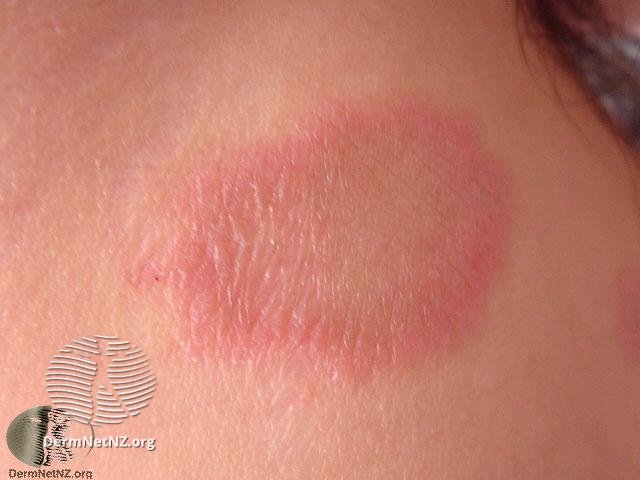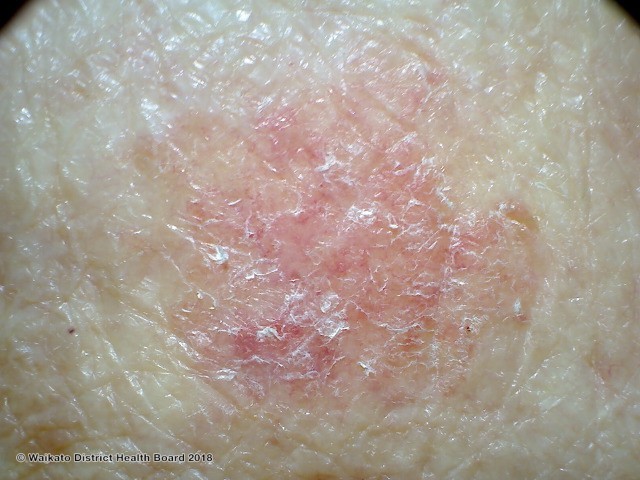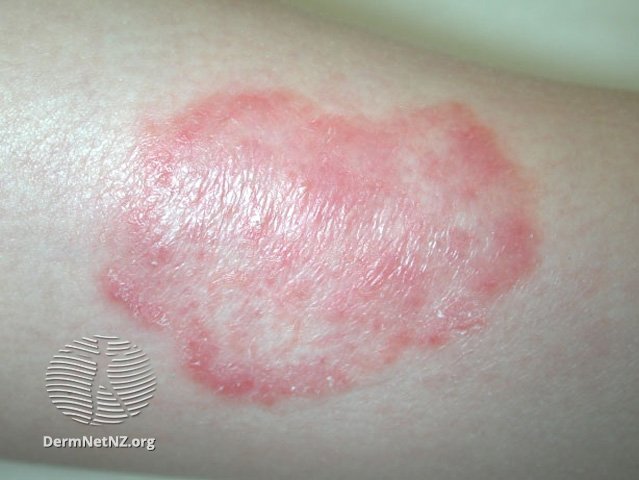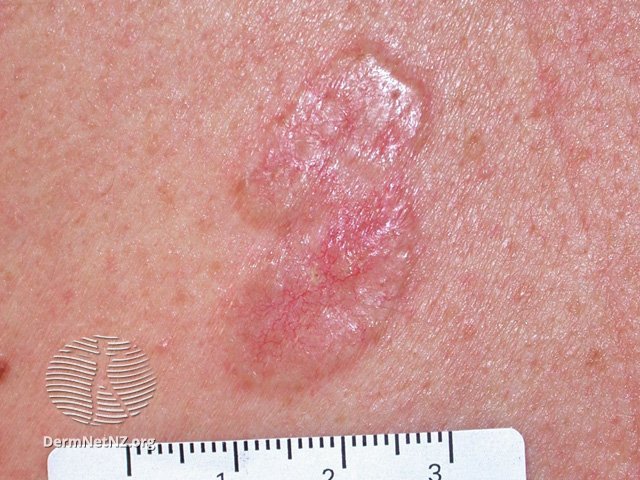Seemingly out of nowhere you’ve developed a red, scaly rash. How many possible diagnoses could there be?
Literally hundreds.
The cause of red, scaly rashes are one of the trickiest issues to diagnose. In fact, the red scaly rashes in the photos below look fairly similar, but are dramatically different diagnoses ranging from fungal infections to skin cancer.
In our dermatology textbooks, it’s called papulosquamous disorder — and it’s a 200-page chapter about red, scaly rashes. It covers everything from ringworm to eczema to skin cancer to inflammatory conditions that we may only see once in our lifetime of practice.

Source: DermNet
When you have a red, scaly rash, don’t risk a skin cancer misdiagnosis and assume your spot is a minor problem. The only way to really know what it is and how to treat it is to see a professional who can diagnosis it.
How to Avoid a Skin Cancer Misdiagnosis
If you have a rash, spot, or group of spots that stay red and scaly, it should be evaluated by a dermatologist. It’s especially important to see a professional if it’s in a sun-exposed area.
The most common misinterpreted skin lesion I see is a pre-cancerous spot or skin cancer. If that’s the case, you need to stop treating it like eczema or ringworm and begin the appropriate treatment immediately. A skin cancer misdiagnosis can be detrimental to your treatment.
 Source: DermNet
Source: DermNetFor more on avoiding an at-home skin cancer misdiagnosis, check out this article: Freckle or Skin Cancer? When You Should Be Worried About Your Skin Spots
When To Go To A Dermatologist
How do you know when to go to a dermatologist and when to wait it out? If you have a red scaly rash that persists for more than two weeks, go see your dermatologist.
What if you visit another type of doctor instead?
 Source: DermNet
Source: DermNetThey may have spent as little as a few days on a dermatology rotation as a medical student. As a result, their knowledge of skin rashes is limited.
If you’re wondering when to go to a dermatologist, the answer is when you have any type of skin condition.
A trained dermatologist specializes in differentiating between hard-to-diagnose skin conditions. We also have highly skilled physician’s assistants at dermatology offices. They work every day at the side of a dermatologist evaluating patients with skin conditions and developing an experienced eye for skin problems.
Differences in skin conditions can be subtle and need to be evaluated by a specialist.
 Source: DermNet
Source: DermNetIf you live close to an Epiphany Dermatology, you should be able to get an appointment within two weeks — usually sooner. We aim to see clients within a week of their call and sometimes can even fit you in a same-day appointment.
What’s the bottom line? Red, scaly rashes are particularly difficult to diagnosis at home — if you’ve got one, call your dermatologist today.

Dr. Christopher Fuller is a board-certified dermatologist in Keller and Roanoke, TX. After three years of general practice with the Marines, Dr. Fuller found himself drawn to the highly specialized field of dermatology. He pursued a residency in dermatology and was recognized as Chief Resident during his final year of training. A member of the American Academy of Dermatology, Dr. Fuller is skilled in practicing medical, surgical, pediatric, and cosmetic dermatology.
Learn more about Dr. Fuller.


